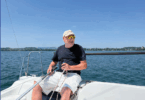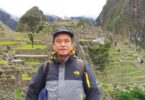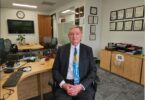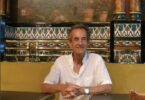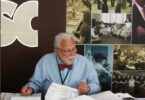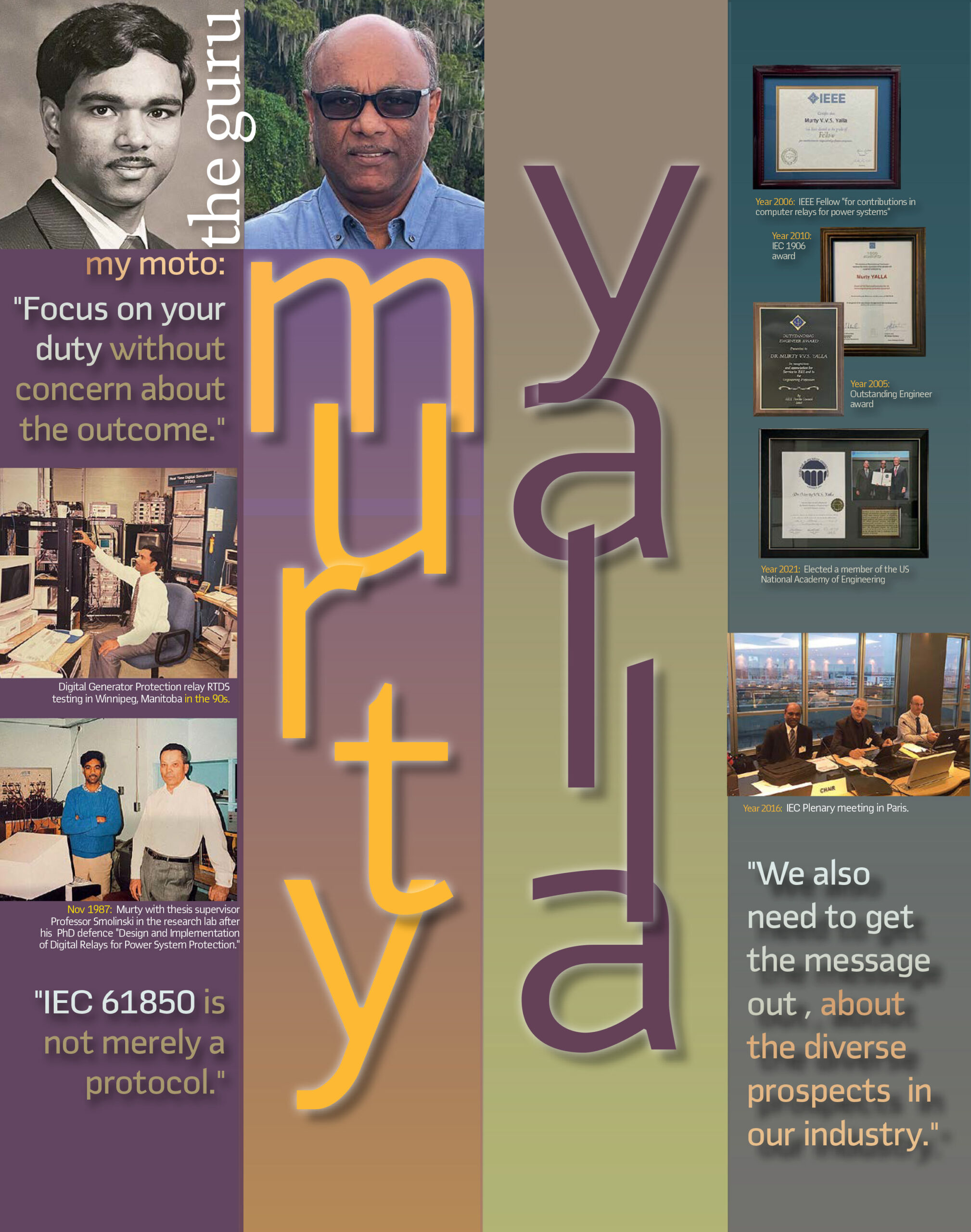
PAC World: When and where were you born?
M.Y.: I was born on August 5th, 1957, in Bendamurlanka village, East Godavari District, Andhra Pradesh State, India. I was one of five siblings (two elder sisters, one younger brother and a younger sister.)
PAC World: Where did you grow up and where did you go to school?
M.Y.: I went to the public elementary School in Bendamurlanka and S.N.S.P. Zilla Parishad High School in Komaragiripatnam (near Bendamurlanka.)
PAC World: What were your interests while in school?
M.Y: I liked science and math. Both my parents (Surayya and Bhagyaratnam Yalla) encouraged me to study even though they had only a 5th grade education and came from a farming community. Growing up, I spent my free time milking cows and buffaloes, and helping my dad on the farm.
PAC World: Do you remember anything from your childhood that you think contributed to you becoming an engineer?
M.Y.: Growing up, I knew nothing about the field of engineering. I come from a remote coastal village. Until high school, I had only travelled within a 50-mile radius. We got electricity in our house when I was 8 years old. I saw my first movie in a theater at the age of 12 and I saw a train for the first time when I was 15. My cousin, Ramakrishna, was studying for a diploma in ceramics technology at a polytechnic institute. One day he got an application form, filled it out for me, and submitted it. In the meantime, I joined a nearby college (10 miles away) specializing in Civics, Economics and Commerce as most people preferred this subject at the time. One month later, I received a telegram from Andhra Polytechnic (APT) in Kakinada (about 50 miles away) admitting me to a diploma in electrical engineering. That is how I ended up becoming an electrical engineer.
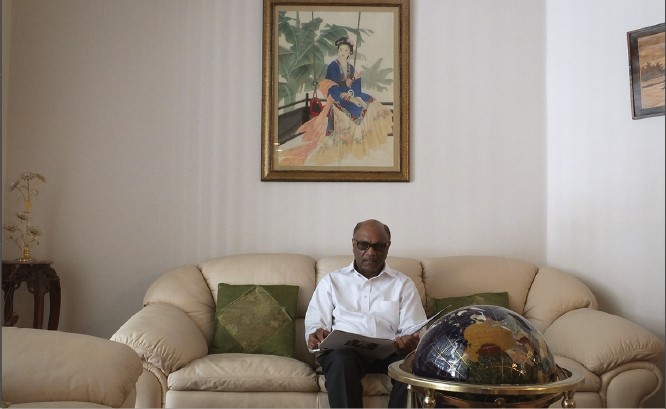
PAC World: Was there a person that had the most influence on you when you were growing up?
M.Y: My eldest sister, Kamala Laxmi Bhai, was a devoted and selfless caretaker. I used to visit her home regularly during summer vacations and she was like a second parent to me. I learned a lot from her on how to treat others with respect, kindness, and compassion.
PAC World: When and why did you decide to continue your education?
M.Y.: After graduating with a diploma in electrical engineering from APT, I was selected to get training as a technician at a local telephone exchange. While training, I was encouraged by Mr. M. Papayya Naidu (lecturer) to take the entrance exam to the local engineering college (Jawaharlal Nehru Technological University, Kakinada) which was offering classes at night. I took the entrance exam and was admitted to the bachelor’s degree program in Electrical Engineering (specializing in Power Systems). This allowed me to work as a technician during the daytime (so that I could take care of my parents, my younger brother and younger sister), and go to school at night. My decision to continue my education was both happenstance and a desire to better support my family.
PAC World: How did you choose which university to go to?
M.Y: It was an easy decision as it was the only college in town and the other 6 colleges (there were only 7 colleges in the state with a population of 48 million in 1976 – now there are more than 400) were far away.
PAC World: Did you study electric power systems or protection while in college?
M.Y.: My diploma was in power systems, my bachelor’s degree was in power systems and my master’s degree at IIT Kanpur was in electronics & communications (digital signal processing, micro-processors, power electronics, communications). I did not study power system protection, outside of some basic introductory information, until my doctoral studies and post-doctoral work in Canada.
PAC World: Was there any professor that helped you select your future career path?
M.Y.: After graduating with my bachelor’s degree with a top rank in the university (9.59/10) GPA, my bachelor’s thesis advisor (Dr. K.S. Rama Rao of JNTU, Kakinada) encouraged me to take the entrance exam for a master’s program at IIT Kanpur where I was introduced to the world of research and where I later worked as a research engineer under Professor R.N. Biswas at IIT Kanpur designing software (developed text editor, file management and message passing (now email) modules using PL/M language) for microprocessor workstations.
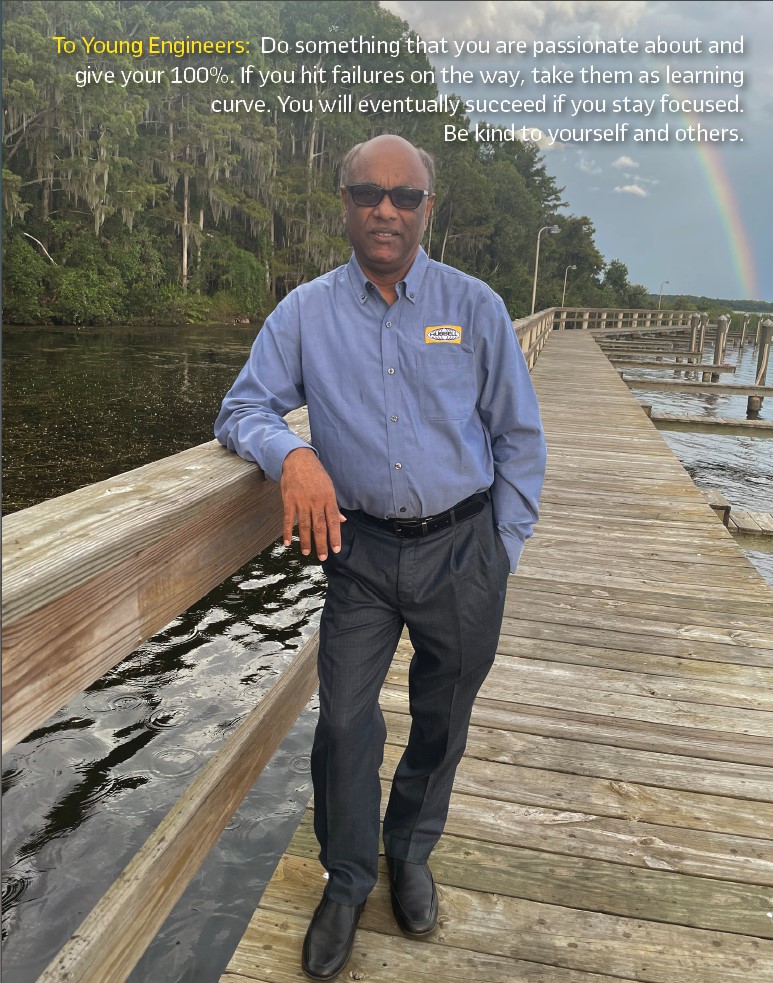
PAC World: Why did you decide to continue your education in Canada?
M.Y.: I did my master’s thesis under Professor G.K. Dubey in power electronics. He encouraged me to apply to the USA and Canada to continue my research work towards a Ph.D.
PAC World: What made you interested in system protection and control?
M.Y.: It was actually by accident that this happened. Two students from the same university applied for a Ph.D. program at UNB. Apparently there was some mix up in the two applications – I ended up in Power System Protection even though my specialization was in Power Electronics and the other student ended up in Power Electronics even though his specialization was in Power System Protection. I had an opportunity to switch to Power Electronics after the first semester, but I liked the courses, professor (Prof. W.J. Smolinski) and research work in Power System Protection, so I continued my research work and didn’t look back.
PAC World: How did you deal with the climate difference between India and the Canadian northeast?
M.Y.: It was not easy in the beginning. I arrived in Canada alone in January 1984. My wife Bhavani stayed back in India with her parents as we were expecting our first child, Pavani. It took several months to get adjusted until the temperatures warmed up.
PAC World: What was your first job?
M.Y: My first job was as a technician in a telephone exchange after I graduated in electrical engineering. I took an entrance exam conducted by the telecommunications department of the Indian Posts and Telegraphs. I was selected for a one-year training course followed by a placement in the telephone exchange in Kakinada, Andhra Pradesh State in India.
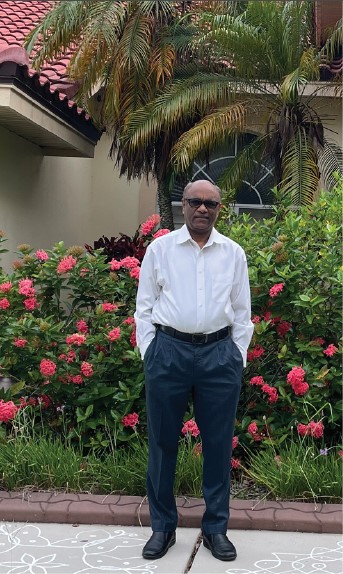
PAC World: Why did you choose to work for industry instead of academia?
M.Y.: In 1987, I was presenting a paper on transformer protection at an IEEE PES Winter meeting at the New York Penta hotel. Bob Pettigrew, president of Beckwith Electric at the time, attended my presentation and said that his company was expecting a research grant to design a digital multifunction relay and asked me if I would be interested in working for them. I wasn’t sure at the time that I wanted to work for industry. After receiving my Ph.D., I moved to St. John’s, Newfoundland in 1988, and joined Memorial University of Newfoundland as a Post-Doctoral Fellow teaching power system courses and conducting research on transformer protection. After about 6 months, I received a call from Bob Pettigrew offering me a job at Beckwith Electric Company in Largo, FL. After braving the Canadian winters, my wife was excited about the warmer weather and convinced me to reconsider and take the industry position in Florida. I made the right choice and never looked back.
PAC World: What was the most exciting project that you worked on at your early years at Beckwith Electric?
M.Y.: My first project at Beckwith Electric in 1989 was to develop digital signal processing algorithms for the detection of islanding condition of distributed energy resources (DER) from the utility grid. Beckwith Electric received a $1 million grant from the Gas Research Institute in Chicago. RG&E (Bob Jones) and Con Edison (Ted Maffetone and Norbert Hornstein) also funded part of the grant to design a digital multifunction relay to replace 13 discrete relays. After studying hundreds of cases, we came up with a peak detection algorithm which was tested extensively at the ER&M facility in State College, PA with excellent results – consistently operated for islanding conditions. This was an exciting project as we were the first ones to find a solution to this problem.
PAC World: What was the most satisfying project you worked on?
M.Y: In 1993- 1995 I worked on the design of a digital multifunction generator protection relay. There was no digital generator protection relay available from a US manufacturer at the time. Beckwith Electric still manufactures a version of the relay that was developed at the time. I was very fortunate to work for Beckwith Electric which provided me with an opportunity to bring years of academic research work to the industry and help protect more than 10,000 generators (from small diesels to large nuclear power plants) around the world.
PAC World: You have worked for more than 30 years for the same company. Why?
M.Y.: I considered myself a part of the Beckwith Electric family working with incredibly talented people. Even though I had several opportunities asking me to move to a much larger company, I liked the small company family-like atmosphere where you can make a difference and technical excellence is highly valued. I also appreciated the encouragement and unconditional support that I received from my past supervisors Jim Harlow, Bob Pettigrew, Bob Beckwith, Tom Beckwith, and now Neil Vandermeulen for my participation in international standards development activities. The other major factor is more personal as my family has forged deep friendships and community over the years in the Tampa Bay area. I am one of the founders of the Telugu Association of Florida. These strong bonds to the company and the long-term friends we built have made it difficult to move to a different company and start anew.
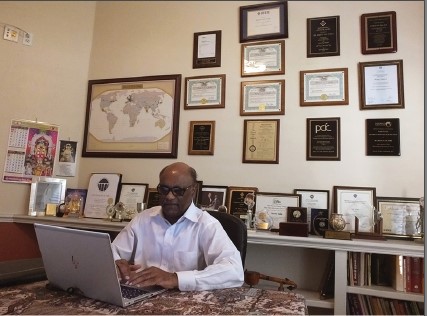
PAC World: How did your career at Beckwith Electric develop to bring you to the position of President?
M.Y: I started my career as a Senior Design Engineer in 1989. I was part of a team that developed the first digital multifunction relay for DER interconnection in the USA which was introduced in 1990. Then I started working on digital universal tapchanger and voltage regulator control (M-2001) along with generator protection relay (M-0430). With the success of these projects, I was offered the position of director of R&D. Beckwith Electric then promoted me to the executive level as a Vice President of R&D/Engineering in 1994 and then in February 2005 to Executive Vice President position. By then, I was also appointed to the Beckwith Electric Board of Directors. After being in that position for about six months, the Beckwith Electric board members convinced me to take the position of President of the company in August 2005. I have never asked for a raise or promotion. In my opinion, one should carry out their duty diligently without expecting a result. Otherwise, you are so worried about the result you lose concentration on your duty.
PAC World: What is the most challenging project that you worked on at Beckwith Electric?
M.Y.: Design of a digital motor bus transfer system in 2006. I was faced with coming up with an algorithm to predict the phase coincidence of two voltage signals – the voltage of the motor bus, which is decaying in frequency, and the voltage of the new source whose frequency is fixed at 60 Hz.
As I was thinking about this problem day and night I thought of an idea where instead of using a fixed 32-sample window for the decaying bus frequency, use an adaptive window (variable from 32 to 38 samples) where 7 DFT phasors are calculated in parallel and pick the phasor from the full cycle window of the decaying frequency. The other voltage uses a fixed 32 sample window as the frequency is not changing. This has helped reduce the errors and the scheme was successfully implemented with several thousand installations. The algorithm was published in IEEE IAS transactions paper as well as a patent was issued.
PAC World: You have been part of the transition to microprocessor-based protection IEDs and now to digital substations. Do you see a difference between these two transitions?
M.Y.: Even though most utilities in Europe have adopted IEC 61850 based digital substations the transition to digital substations in North America is different. The key difference is that the transition to microprocessor-based relays initially were done in small steps or one relay at a time with much less budget where decisions were made at a local level. However, with digital substations the projects are much larger and more expensive to implement even though the benefits can be paid back in a few years. These projects need an executive level sponsor who understands and believes in this technology.
PAC World: You have been actively involved in the development of the Smart Grid. How did that happen?
MY.: Working at Beckwith Electric gave me a chance to be involved in the design of controls for power distribution. My second project after I was involved in the DER interconnection/Generator protection project was the design of Load Tapchanger control for transformers. Later I oversaw research and development projects in voltage regulator controls, capacitor controls and recloser controls. I was also active with the IEEE T&D committee, smart distribution WG, volt var taskforce where I lead the development of an IEEE PES Tutorial on volt var control and optimization. I chaired a WG that developed IEEE volt var control and optimization tutorial.
PAC World: For many years you have been involved with IEEE, IEC, NERC and CIGRE. When and why did you join each one of them?
M.Y.: When I moved to Canada in 1984, I joined IEEE in May 1984 as a student member at the advice of my Ph.D. supervisor (Prof. W.J. Smolinski). He told me I need to read a lot of IEEE Journal papers as part of the literature survey for my research. In 2004 at an IEEE PSRC meeting Eric Udren (Technical advisor to the US National Committee of IEC TC95) was giving an IEC advisory report. He asked for volunteers to join an Ad Hoc working group that is being formed to look at IEC TC 95 functional standards. I volunteered and joined the group.
After chairing IEEE C37.102-2006 “Guide for AC Generator Protection,” Bob Cummings (Director of Event Analysis at NERC) requested me to join NERC System Protection and Control Subcommittee (SPCS) which was studying protection operation during 2003 NE blackout.
In 2002 I met Gerhard Ziegler (past chair of CIGRE SC 34) in Paris. He told me that CIGRE is working on an “International Guide on the Protection of Synchronous Generators” which was taking a long time and it will be a great help to the team to speed up the development if I join as a US delegate.
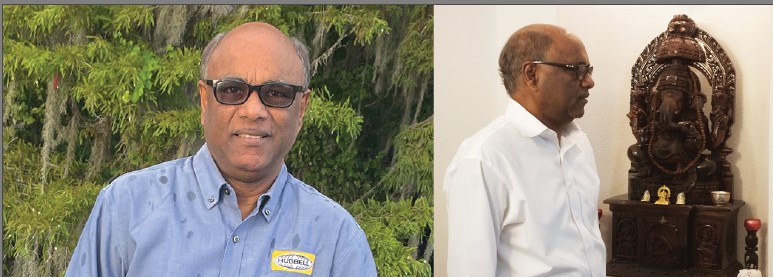
PAC World: How important do you think is their role for your development as a professional?
MY.: They played a key role in my professional development. When you work at a single company all your life (true in my case) your knowledge and perspective is confined and limited. What helped me to grow professionally was to engage in deep technical discussions at standards committee meetings and conferences with peers in the industry (competitors, customers, university professors, consultants, executives, governmental agencies etc.). The value these committees bring to protection and control engineers cannot be underestimated. The relationships you develop at these meetings will give almost speed-dial access to experts in the field.
PAC World: You have been in leadership positions in IEEE and IEC. Why did you do that?
MY.: I was not aiming to be in leadership positions in these organizations. It happened with the insistence of others. Past IEEE PSRC leaders nominated me for the IEEE PSRC chair position.
I was elected to the IEC TC95 chair position which I have been serving for the past 8 years
Leading these two organizations in parallel while doing the day job of running Beckwith Electric as President and traveling to many cities (domestic as well as more than 35 countries) was a tremendous commitment of personal time away from family.
PAC World: Today we are part of the transition from hard wired protection and control systems to IEC 61850 communications based fully digital substations. What is your opinion about it, the benefits and challenges?
M.Y.: IEC 61850 is not merely a protocol, it is a comprehensive set of protocols, models and component standards which provides a platform for designing, operating and maintaining substation protection, automation and control systems.
Major advantages of digital substations are support for interoperability across different vendors, elimination of a lot of hardwiring from the substation yard to the control house improving reliability and O&M costs, highspeed peer to peer communication allows implementation of complex protection schemes. With the introduction of routable GOOSE, peer-to-peer communications can easily be extended to distribution field devices including DERs.
Some of the challenges are that the standard is too large and not easy to comprehend with many acronyms are introduced which requires trained workforce to configure and maintain which is not readily available.
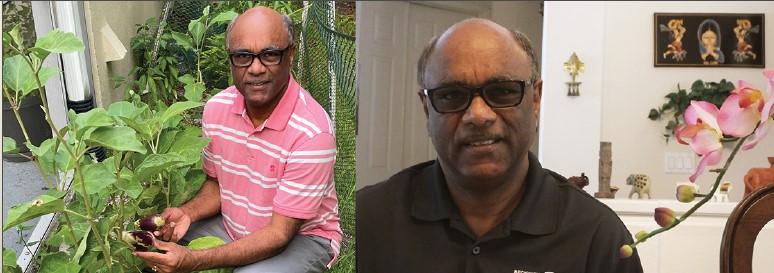
PAC World: The electric power grid today is very different from the power grid of the twentieth century. What do you think about the impact of inverter based distributed energy resources on protection and control systems?
M.Y.: We are already facing the challenges of the large penetration of inverter-based resources (IBRs) on the grid. The reduction of fault current levels, nonlinear behavior of inverter response during fault conditions, and lack of negative sequence components for polarizing quantities are all characteristics of IBRs which can make traditional protection systems do not respond appropriately during fault conditions.
PAC World: What do you believe is the best way to share your knowledge and experience with the new generation of protection engineers?
M.Y.: Through tutorials, paper presentations, and discussions at IEEE/IEC committee meetings. I have been teaching and sharing my knowledge and experience for the past 30 years at various conferences and committee meetings in the USA and more than 35 countries. I have attended 91 out of 93 IEEE PSRC meetings and have been involved in various working group activities during the past 31 years. I have also given presentations to thousands of utility engineers.
PAC World: What do you think is most important for a protection engineer’s development?
M.Y.: Power System protection is both art and science. To be successful, protection engineers require gaining expertise in many disciplines in electrical engineering & computer science. The areas include power systems (system protection, fault calculations, system dynamics and stability), communications including protocols, computer science/engineering (hardware, firmware, software, cybersecurity) etc.
I was fortunate to study all areas of power systems, electronics and communications and computer science.
PAC World: What do you consider your biggest professional accomplishment?
M.Y.: I was able to transfer academic research work from my doctoral studies (design of digital overcurrent, transformer differential, and distance protection relays) to products made by Beckwith Electric which are now applied worldwide to control and protect electric power systems. More than 10,000 generators are protected worldwide by these products, keeping electric power more secure and reliable.
PAC World: You have received many awards and recognitions. Is there one that is most important to you?
M.Y.: I was incredibly honored to be inducted to the National Academy of Engineering. Honestly, I was surprised and shocked when I received the news two years ago. It will give me a chance in the future to serve the nation alongside my distinguished peers in industry and academia.
PAC World: What do you think we need to do to attract more young people to our industry?
M.Y.: We need to increase awareness of the challenges facing the modern and evolving power grid at the college/high school level. We also need to get the message out to college students about the diverse opportunities in this multidisciplinary industry.
PAC World: What is the advice that you would give when you are in front of an audience of young people?
M.Y.: Do something that you are passionate about and give your 100%. If you hit failures on the way, take them as a learning curve. You will eventually succeed if you stay focused. Be kind to yourself and others.
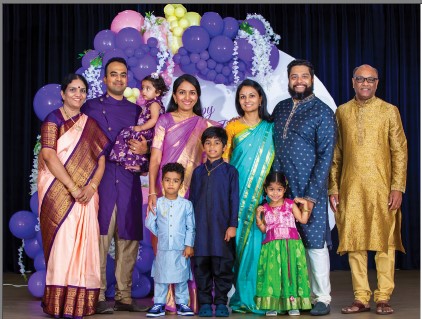
PAC World: What do you think is your most important personal achievement?
M.Y.: It is hands down my family. My professional growth is highly attributed to having a great family at home. My wife Bhavani and I have two daughters. Our elder daughter Pavani lives 20 miles from us in Tampa, FL with her husband (Neal), son (Ishaan) and daughter (Riya Devi). Our younger daughter (Pallavi) lives in Miami, FL with her husband (Kashyap), son (Akshay) and daughter (Sitaara).
PAC World: You have traveled to many countries. Do you have a favorite place to visit?
M.Y.: I loved visiting Singapore – the city is very clean, secure, and has a great variety of food.
PAC World: Do you have a hobby or something that you like to do when you are not working?
M.Y.: Gardening.
PAC World: You have been married for 40 years. What is the secret?
M.Y.: Love, affection, understanding, and adjustment. Without my wife’s strong support and understanding, our daughters and I would not be where we are today.
PAC World: How do you mix your professional and your personal life?
M.Y.: This is the most challenging thing in my life. I always want to give my best to the company that is putting food on my dining table every single day. I also want to volunteer and help society by contributing to the development of industry standards and guides which make electric power safer, secure, and more reliable. At the same time, I want to be present for my family and never want to miss any family occasions, especially now that I have grandchildren. It helped immensely when my wife decided to stay home to take care of the family. Her complete dedication to our family helped me and our children be more dedicated in our educational and professional pursuits.
PAC World: You are still working in different roles. Do you ever consider retiring?
M.Y.: I will continue to work as long as I am enjoying what I am doing, and I am able to contribute to the organization. Even after retirement, I plan to continue to volunteer for IEEE, IEC and NAE.
PAC World: What is your favorite music?
M.Y.: Indian film & classical music
PAC World: What is your favorite form of entertainment?
M.Y.: Spending time with our grandchildren, watching Indian Telugu language movies.
PAC World: Do you have any favorite food?
M.Y.: South Indian (especially eggplant curry), and Italian.
PAC World: Do you have a motto?
M.Y.: Focus on your duty without concern about the outcome – this way you can focus all your efforts on performing the job.
PAC World: Is there a question that we forgot to ask you?
M.Y.: Yes, who is your role model in the power system protection area?
Professor Arun G. Phadke of Virginia Tech. I highly respect his contributions to the power system protection area, synchrophasors and wide area measurements.
I was fortunate to meet him for the first time at a PES Winter Meeting in New York in 1987 and since then continue to meet and interact with him at PES General Meetings and PSRC committee meetings.
Biography:
Dr Murty V.V.S. Yalla recently serves as a Vice Present & General Manager of Protection and Control business unit (Beckwith Electric & EIG brands) of Hubbell. Formerly he was president of Beckwith Electric Co. from 2005 to 2020. He is also the chair of the International Electrotechnical Commission (IEC) Technical committee 95, Measuring Relays and Protection Equipment. He is the past chair of IEEE PES PSRC committee, past member of NERC SPCS, and US delegate to CIGRE. He received BSEE and MSEE from India and Ph.D. in Electrical Engineering from University of New Brunswick, Canada. Dr. Yalla holds 7 US patents related to the protection & control of power systems. He was elevated to the IEEE Fellow grade in 2006 and elected to the US National Academy of Engineering in 2021.



